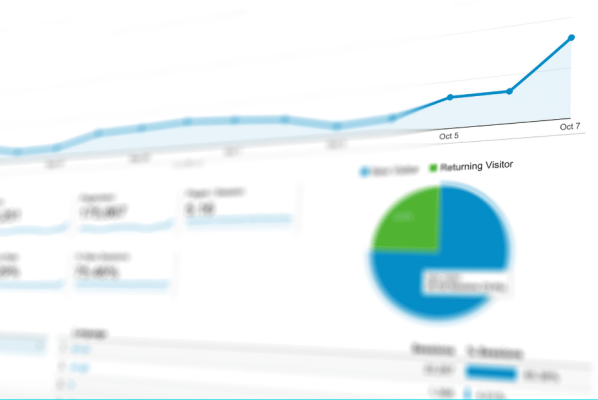No products in the cart.
SEO
How To Do SEO For Website Step By Step: Traffic Boosting Strategies
SEO, or Search Engine Optimization is a strategy that many online marketers use to help their website rank higher in search engines for keywords related to their business. How does this work? It’s simple! SEO uses different on-page and off-page techniques to increase the number of visitors your site gets from both organic (free) and paid sources. The goal of SEO is not only to drive traffic but also convert it into leads or customers. In this blog post, we will discuss How To Do SEO For Website Step By Step so that you can learn how easy it is to boost your website traffic with these 9 steps!
Let’s dive in and discuss each of these points in detail:
1. Understand What SEO Is
SEO stands for “Search Engine Optimization.” It is a term used to describe an array of techniques that help increase your site traffic by getting it ranked higher on search engines like Google, Yahoo!, and Bing. It is a long-term strategy that requires you to invest time, money, effort, and research in order for your site to increase its traffic over time if done properly.
The goal of SEO is simple: get more people (targeted users) to visit your website by making it easier for search engines like Google find, crawl, and rank your site for specific keywords related to what you do.
To do this, you need to understand how search engines work and what they look for in a website’s content. This is where SEO research comes into play. The more your site ranks high on the first page of Google (or any other major search engine), the more traffic it will get over time from both organic (free) and paid sources.
In a nutshell, SEO is the process of increasing your website traffic by getting it ranked higher in search engines for keywords related to what you do or sell online. It can also be defined as “optimizing” your site so that search engine crawlers and algorithms can easily find and understand what’s on each page of your site. This optimization process includes on-page (content and coding) as well as off-page optimization techniques like link building and social media marketing.
SEO is a long-term investment that can pay off big over time if done correctly, but it’s not easy. There are no shortcuts when it comes to SEO, so don’t be fooled by “black-hat” or “spammy” techniques that promise quick results. If it sounds too good to be true, it probably is. The best way to achieve long-term SEO success is to focus on creating great content, building quality links, and using social media marketing wisely.
Now that you understand what SEO is, let’s move on to the next step.

2. Understand What Search Engines are Looking for?
Search engines like Google, Yahoo!, and Bing use a variety of factors to rank websites in their search engine results pages (SERPs). They look at On-Page SEO factors as well as Off-Page SEO factors when determining where to rank your site in search results.
On-Page SEO factors are the things you can control on your website that influence how well your site ranks in search engines. These include the title tags and meta descriptions of each page, the content on each page, the H tags (header tags), images, videos, and more.
Off-Page SEO factors are the things you cannot control on your site but can influence how well it ranks in the search engines. These are things like links pointing to your website from other sites, social media shares and mentions of you or your company on Facebook, Twitter, LinkedIn, etc., local citations (links), and more.
Authority: One of the most important factors that search engines look at when ranking websites is their “authority.” Authority is a measure of how credible and trustworthy a website is in the eyes of search engines. The higher your authority or the more credible and trustworthy your site appears to be, the better it will rank in SERPs.
One way to increase your website’s authority is to get more high-quality links from other websites. The more quality links you have pointing to your site, the better. Quality links come from reputable websites that are in the same industry or niche as you and have a similar audience.
Another way to increase your website’s authority is by getting social media shares and mentions from other users. The more people who share or mention your site on social media, the better. And the more high-quality websites that do so, the better.
User experience: Another important factor that search engines look at when determining where to rank your site in SERPs is what users are doing on each page of the site. If you visit a website and it’s poorly laid out, confusing, or just plain hard to use, chances are most people will leave quickly without ever clicking any links.
Sites with high user experience (UX) scores are more likely to keep people on their site for a longer period of time, and the longer someone stays on your website, the better it is for your SEO.
One way to improve your website’s user experience is by making sure all your content is well-written and easy to understand. You should also make sure all your pages load quickly, your site is mobile-friendly, and you have an effective 404 error page (if any).
Another way to improve your website’s user experience is by having a good call-to-action on every page of the site. A Call To Action (CTA) button or link can be as simple as “Sign Up,” “Download,” “Buy Now,” or “Learn More.”
Website speed: Website speed is another important factor that search engines look at when ranking websites in SERPs. If you have a slow website, people will likely leave quickly without clicking any links or staying very long on the site.
Search engines like Google measure how fast your site loads using their own internal tools called Page Speed Insights and Pingdom Tools. These tools measure how long it takes your pages to load and also give you suggestions on what can be done to improve the speed of each page.
Website security: Search engines like Google look at website security as one way they determine whether or not a site is reputable, trustworthy, and credible. Having an SSL certificate for your site will help with this factor when it comes to trustworthiness.
Sites with SSL certificates are more likely to be viewed as trustworthy because users know their information is secure when they enter it into an SSL-secured site (i.e., the URL starts with “HTTPS” rather than just “HTTP,” which means there’s a secured connection).

3. Choose A Domain Name:
The domain name is the address (URL) of your website. You should choose a domain that best describes what you do or sell and make it easy for users to remember by using keywords related to your business, product, or service.
Here are some tips to consider when choosing a domain name:
Make it easy for users to remember and type in by using dashes instead of underscores (_) or other characters such as (.)- .com is always a good choice if available! If you can get multiple variations on the same domain, even better! For example, if your website is about dogs and you have several products or services related, consider using a .com version of the domain as well as variations such as:
dogs-dogtreats.com
This way if someone comes across one variation in search results they can type it into their browser and go directly to that page on your site without having to type the entire domain in.
Include keywords related to your business, product, or service in your domain name for better SEO.
Avoid using generic terms like “blog,” “shop,” “store,” etc. as these will be difficult to rank for and are often competitive.
Do not select numbers, only letters – this makes it hard for people to type in the address correctly on their keyboards i.e.howtodo-seo.com
Be sure to purchase multiple variations of your domain name (including the .com version) to prevent someone else from taking it!
Once you have chosen your domain name, be sure to register it with a domain registrar. We recommend Siteground and Bluehost.

4. Choose the Right Keywords:
The right keywords are ones that people use to find your website in search engines. You should do extensive research to find keywords that are relevant to your business, product, or service and use them throughout your website including in the domain name, titles of web pages, meta descriptions, and in the body of your content.
Keyword research is a very important aspect of SEO. It’s all about finding the right keywords that you can use to generate traffic and leads for your business – but not just any keyword will do! You need to choose high-traffic, low-competition keywords so that you don’t have to spend too much money on paid advertising or compete with big brands.
There are a few different methods you can use to find these keywords, but my favorite is the Google Keyword Planner. This tool lets you see how many people are searching for a particular keyword each month as well as its competition level.
Before even starting an SEO campaign it is important that you know exactly which keywords (also known as “search terms”) are best suited to represent your business/website online. Doing keyword research will allow you to choose the right keywords for your campaign, and increase its effectiveness. At first this may seem like a difficult task; however, there are numerous free online tools that can help greatly simplify the process!
Doing Keyword Research: A Quick Guide
There is no single tool that does everything in terms of keyword research. However, the following is a list of some great tools that will help get you started with your SEO campaign:
Keyword Discovery – Free Tool
Google AdWords Keyword Tool – Free Tool
SEOBook’s Free Keyword Research Tool – Free Tool
Ubersuggest – Free Tool (it also has a paid version)
Ahrefs – Paid Tool
SEMRush – Paid Tool
Once you have a list of potential keywords, it is important to do some further analysis in order to determine whether or not they are worth targeting. One way to do this is by using the Google Adwords Keyword Tool. This tool allows you to see how much traffic a particular keyword receives each month as well as its competition level.
If the monthly search volume for your target keyword is low (under 100) and the competition is high, then it’s likely not worth targeting that keyword. However, if the monthly search volume is high (over 1000) and the competition is low, then it might be worth targeting that keyword.
Another factor to consider is how easily you can rank for a particular keyword. If the monthly search volume is high but the competition is also high, it will be difficult (but not impossible) to rank in the top spot for that keyword without some serious SEO effort.
So once you’ve selected your target keywords, it’s time to start creating content around those specific terms! Keep in mind that the more related and high-traffic search terms you can use on a single page, the better. You want to see as much of an increase in keyword ranking for each term as possible.
Also, keep in mind that using a variety of terms related to your business can be beneficial as well. For example, if you run an online store selling custom t-shirts and also make hats, consider using both “custom printed t-shirts” and “custom hat design” throughout the page.
The Right Keyword Distribution Is Key! You should aim to use your target keywords throughout your website, but don’t go overboard. A good rule of thumb is to use them about 20% of the time. So if you have a 1000-word page, 200 words should be dedicated to your target keyword.
Including your target keyword in the following places will help improve your SEO ranking: Title Tags H tags (Headers) Body of the page URL Slug (the end of the URL) Anchor text (text you hyperlink to other related pages on your website)

5. Optimize Your Site for Search Engines:
Once you have chosen the right keywords, it is important to optimize your website for search engines. This includes adding the keywords throughout your site including in the domain name, titles of web pages, meta descriptions, and in the body of your content. You should also use other techniques such as optimizing your images for SEO, setting up 301 redirects, and using schema markup.
Just make sure not to overdo it! Sometimes, too much optimization can result in a drop in your site’s rankings.
Some examples include:
Title Tag: Include one or more instances of target keyword(s) here! This will help increase clickthrough rate (CTR, which is very important).
Keyword-focused Meta Description: This will also help increase CTR. It should be under 155 characters and include one or more instances of target keyword(s).
Keyword-focused Meta Keywords (not used anymore by Google): Include the same keywords you used for your title tag here! The more times the keyword appears on a page, the better.
H1 Tags: Include one or more instances of target keyword(s) here!
Body Content: a href= “keyword” – In your body content (at least 20% includes this). Use it at least once in every 1000 words. Your page should have an internal link to all other pages on the site but also include other outbound links to high-quality websites.
Content topic: Come up with a content topic (ideas). When you are creating a piece of content, it’s important to come up with a topic that will be interesting and useful to your audience. The best way to do this is by using Google Adwords Keyword Tool.
Content length: Aim for at least 1000 words per post, but don’t go below 500 or you won’t be able to include all of the necessary information.
Use keyword in anchor text: Inbound links are a major factor that Google takes into account when determining a website’s rank. When creating links to your site from other websites, include your target keyword in the anchor text.
For example, if you own a business that sells custom t-shirts and wants to create an outbound link on your website pointing visitors to another site selling t-shirt printing services, use “custom printed t-shirts” or something similar as the anchor text.
Update content regularly: Google likes websites that are constantly updated with new, relevant content. If you can’t commit to posting new content on a regular basis, consider using a blog or publishing platform such as WordPress, which makes it easy to publish new content regularly.
Use social media: Make sure to use social media to share your content and help it reach a wider audience. Not only is this great for SEO, but it’s also a great way to connect with your customers and followers.
Alt Tags: Include the target keyword in your alt tags. Google can’t read images, but it can read the alt text, so use this to your advantage by including keywords whenever possible.
Internal linking: to improve the SEO of a piece of content, you should make sure that there are links to related pages on other parts of your site throughout the post (at least once every 100 words or so). This will help increase traffic and rankings for those individual pieces by bringing in people who are already interested in the topic.
Outbound linking: include links to high-quality websites outside of your own site. Not only is this good for SEO, but it’s also a great way to build relationships with other website owners and bloggers.
Rich Snippets: use rich snippets markup to help improve your click-through rate. Rich snippets offer better context for your content and can help you attract more visitors to your site by providing a deeper link to the specific information that they need.
A rich snippet is a small piece of code that you add to your HTML that tells search engines what type of content you have on the page. Use plugins like Yoast SEO to help you add rich snippets markup to your content.
301 redirect: A 301 redirect is a permanent server response that informs the search engine’s crawlers of the change and asks them to update the link. When you change your site, or if you move it from one domain name to another, this is typically necessary in order for all of your rankings on Google (and other similar sites) not be lost when the search engine crawlers find the new link.
Use a 301 redirect if you move your site to another domain name, change URLs on pages (or create any other kind of permanent changes to the content), or shut down an existing website and launch its replacement. It’s also important to note that when Google finds out about this type of redirection, it will create a new page for the old URL and add its original content to that page. This is what we call ‘soft 404’.
As you can see, all of these strategies are simple but important steps in order to get organic traffic from search engines (ie free targeted visits). We recommend that you blog regularly so as not to lose the flow of quality and relevant content to your site. This will help you increase the number of visits coming from Google or other search engines, which is free traffic that converts into customers for your business!
There are many other ways to improve your website’s SEO, but these are some of the most important things to focus on. By following these tips, you can start seeing an increase in traffic and better rankings over time.

Code Optimization
Search engines are always looking for ways to improve their algorithms and give searchers what they want. This is why keywords have become so important in SEO – but it doesn’t end there!
Search engines also look at how you code your site and whether or not you’re using best practices. This means using valid HTML code, structured data markup, and correct heading tags (H tags). You can use plugins like Yoast SEO to help you make sure your site is coded correctly.
Another way to improve your site’s SEO is by using the correct file names and extensions for your images and videos. For instance, if you have a video called ‘myvideo.mpg’, make sure that the filename of the image associated with that video is also ‘.mpg’. This will help search engines better index your site and recognize the relationship between those files, which can improve your rankings.
Here are some of the coding factors for best practices:
Proper use of heading tags (H tags)
Heading tags are used to structure your page and allow search engines to see what the most important parts of it are. They also help people scan a page quickly and easily find information, which is why they’re so important if you want your site to rank well in Google’s rankings for specific keywords.
Headings should be relevant to the content that follows and be used in a way that makes sense. For example, if you’re writing about SEO for websites, it’s best to write your main heading with this keyword (i.e., “What Is Seo?” or something similar). This will allow search engines to receive clear signals on what your page is about and will let them know you’re writing a page specially for this keyword.
You can also use subheadings in your content, which are different from the headings used to organize parts of your text (H tags). Subheading act as signposts that help search engines see what’s important on every page of your website – they should be used to summarize the main points of each paragraph.
Structured data markup
One way to help search engines understand your content better is by using structured data markup. This is a code that you add to your website’s HTML that tells search engines what type of information your page contains (such as articles, products, events, etc.).
Once you’ve added structured data markup to your site, you can also use Google’s Structured Data Testing Tool to see how it appears in search results and make sure that it’s working properly.
This is a great strategy for e-commerce websites because using structured data will help viewers easily find exactly what they’re looking for on each page of your site – which is what Google wants!
Valid HTML code
Another way to ensure that your website is easy for search engines to crawl and index is by using valid HTML code. This means ensuring that all of your tags are closed properly, all of your links are working correctly, and that you’re not using any deprecated features. You can use the HTML Validator to check your code for any errors.
If you’re not sure how to fix any errors that the validator finds, you can search youtube or Google for specific tutorials. This can be a bit more challenging to fix if you’re not already familiar with HTML and coding, but it’s worth your time because using valid code is an important part of search engine optimization!
Robots txt file
One of the most important things to do when setting up your site is to create a robots txt file. This will allow you to specify which pages search engines can access and how they should crawl them. Google’s documentation on this topic explains it best, but there are two main reasons why you should set a no-index tag for directories or files that you don’t want included in search results.
First, this will tell Google not to index these pages at all and they won’t appear in search results. Second, it can help you speed up your website’s load time because Google won’t have to crawl these files or directories every time someone searches for them. This is a great way to save bandwidth and improve your site’s performance overall.
Search engine friendly URLs
It may seem like a small detail, but having search engine-friendly URLs is super important for SEO. A lot of people overlook this step because it can be confusing to make sure each page has its own unique URL – so many websites just choose the name or model of a product and number their pages from there.
Instead, try to include the most important keywords in your URLs (while still making it easy for people to remember) so that search engines can easily understand what each page is about and index them properly. This will also make sure that visitors are able to find exactly what they’re looking for on your site.
Sitemaps
Another thing you should include in your website’s robots txt file is a link to an XML sitemap. This lets search engines know that there are pages on your site for them to crawl and index, which will help improve the speed at which they can find new content or update old data.
There are a lot of different guides online about how to create a sitemap, but the most important thing you should remember is that it can’t be edited by any human. Google will only use this file if it’s created using special XML code and there are no other links on your site pointing to these pages (since they’ll already have been crawled).
You can use plugins to generate XML sitemaps for your WordPress or Joomla site, and there are also a lot of online tools that can help you create them if you’re using a different platform. Some plugins for WordPress include Yoast SEO and All in One SEO Pack.

6. Publish Great Content:
Producing great content is the only way to ensure that users will return to your site again, visit more pages on your website (increasing time on site), share it with others via social media or email, click links within your page, and most importantly, return to your site via search engine listings.
When people are looking for information on a specific topic, they’re going to search for it. That means that if you have the best piece of content on your target keyword, then all people need to do is Google the term and go directly to your page!
Content should be unique, relevant to user needs and wants, easily readable (whether in paragraph or list form), and updated regularly. You should aim to publish at least one piece of content per week, but more if possible. Your content should be at least 1000 words long, and if possible, include images, videos, or infographics.
When writing content for your website, you have a few different options. The first is to have a blog that you update regularly, with each post containing valuable information for your target demographic. The second option would be an FAQ page where users can ask questions and other visitors can answer them (you could also include this as part of your site’s forum). And the final choice would be to create marketing pages for products or services you’re offering (which you can also turn into blog posts or use as a service page).
Make sure that your user experience is superior – this means making it easy for site visitors to find information and navigate through your website quickly by using menus, headings, and other design features.
If you’re not sure how to write great content or what topics to cover, take a look at some of your competitor’s websites and see what they’re writing about. You can also use Google Adwords Keyword Planner Tool to get ideas for keywords that have high search volumes but aren’t over-optimized by your competitors.
You can also add images, videos, infographics, or any other type of multimedia to help break up the text and keep users engaged. Remember that people are skimming content more than ever before so using short paragraphs, lists, subtitles, etc. is essential for keeping their attention on your page.
Although it can take a lot of time and resources to produce quality content, you have to remember that without great content, no one will visit your website in the first place.

7. Promote Your Content:
Social Media
One of the best ways to get people interested in visiting your website is by promoting your content on social media sites like Facebook and Twitter that are used by millions around the world. You can also use other social media sites like LinkedIn, YouTube, and Pinterest to promote your content.
Using these sites is pretty simple – you can use the tools on most social media sites to promote your content. On Facebook, for example, if you want to share a link with all users of your page (or just some), then simply go into their “Share” section and choose the site that you’d like them to visit when they click on it. You can also share photos, videos, and other types of content on Facebook.
Twitter is a little different in that you can only tweet links (not photos or videos) and it’s limited to 140 characters. However, this makes for a quick and easy way to get your message out there.
LinkedIn is great for sharing articles, infographics, and other types of content.
Pinterest is a visual social media site, so it’s perfect for sharing photos and other types of multimedia.
Youtube is a great site for sharing videos. If you include your website URL in the description of the video, then people will visit it more often than if they just watched it on YouTube itself.
You can use plugins on your site to make it easy for people to share your content on social media sites. For example, the “Share” buttons that you see on most websites are plugins that allow users to easily share articles, photos, and other types of content with their friends on social media sites. Some plugins for WordPress that are popular are:
ShareThis: This plugin allows users to easily share your content on over 100 different social media sites. It also has an easy-to-use interface and is highly customizable (you can change the look of the buttons, choosing from hundreds of templates). You’ll need a Pro account at ShareThis to be able to customize it.
AddThis: This plugin allows you to add “Share” buttons and other types of widgets (like Facebook, or Pinterest) that allow users to share your content on social media sites. You can also customize it with different colors, fonts, sizes, etc.
Plugins like these are essential for getting people interested in visiting your website because most people don’t want to take the time to copy and paste a URL into their social media site.
Use Paid Advertising:
Another great way to get traffic to your website is by using paid advertising. This includes services like Google AdWords, Facebook Ads, and Twitter Ads that allow you to place ads on their respective networks. You can target your ads to people who are interested in what you do by using specific keywords and demographics.
It can be a little tricky to set up your first ad campaign, but the payoff can be worth it. Once you have a good understanding of how the system works, you can start increasing your traffic by targeting more people who are interested in what you do.
You can also use other paid advertising services like Bing Ads and Yahoo! Sponsored Search.
Ads can be a great way to get more traffic to your website, but you need to make sure that the ads are well-targeted and relevant to your audience. If people click on your ad and then leave your website without taking any action, then you’ve wasted your money.
Use Email Marketing:
Email marketing is another great way to increase traffic to your website. This involves collecting email addresses from people who are interested in what you do and then sending them periodic emails with links to your content.
You can also use email marketing to sell products or services on your website.
There are a number of different services that you can use for email marketing, but the most popular one is probably MailChimp. It’s free to use up to a certain number of subscribers, and it has a lot of great features like customizable templates and detailed analytics.
Email marketing can be a great way to increase traffic to your website, but you need to make sure that the content of your emails is interesting and relevant to your audience. If people unsubscribe from your emails, then you know that you’re doing something wrong.
You can also use tools like MailTrack and Sidekick to make sure that the people who subscribed actually opened them (and clicked on any links).

8. Build Quality Backlinks
One of the best ways to improve your website’s SEO is by building quality backlinks. Backlinks are links from other websites that point back to your own site. The more high-quality backlinks you have, the higher your website will rank in search engine results pages (SERPs).
The best way to do this is by creating valuable content that other websites will want to share with their audiences. You can also use tools like HARO and BuzzSumo to find opportunities for guest posting and link building.
There are a number of ways to build quality backlinks. Here are a few of the most effective methods:
Build Links From Guest Posting On Other Sites
Guest posting is one of the most popular ways to build quality backlinks for your site. A guest post is an article written by you and published on another website that accepts outside content contributions. When someone writes a guest post for your website, they’re essentially giving you a high-quality backlink.
To find websites that accept guest posts, use Google search operators such as “intitle:contributors” or “inurl:write-for-us”. You can also use sites like Accessily.com and TheHoth.com to find opportunities.
Once you’ve found a website that accepts guest posts, send them an email pitching your article idea. Be sure to include a brief overview of the article, as well as links to some of your previous work. If they’re interested, they’ll reply with more details about what they’re looking for.
Submit Your Site To High-Quality Directories
Another great way to build quality backlinks is by submitting your website to high-quality directories. There are a number of different directories you can submit your site to, but it’s important to only submit to quality sites that will actually benefit your SEO.
You can search for these by using Google search operators such as “site:.edu inurl:directory” or “keyword + directory”. You can also use directories like DMOZ and The Open Directory Project.
When submitting your website to a directory, be sure to include as much information as possible. This includes your website’s title, description, keywords, and contact information. If the directory doesn’t have a place for you to add this information, make sure that your submission includes it in the body of the email itself.
Before submitting your site to any directories, use Open Site Explorer or MozBar to find out which sites already link back to yours (and how many). This will help you determine whether or not the directory you’re considering is worth your time.
Some good directories to submit your site include DMOZ, Yahoo! Directory, and Business.com.
Create An Online Press Release
An online press release is a great way to quickly build quality backlinks for your site. It involves writing an article promoting something related to your business and then submitting it to free sites that host press releases such as PRLog or PRWeb. You can use a site like eReleases to submit your release to paid sites as well.
Once your press release is live, you can promote it on social media and include a link back to your website. This will help improve your website’s SEO and generate traffic.
Acquire links naturally from ranked posts
if you target longtail keywords that are easy to rank for and you write an article with a great title, it will likely be shared on social media, or rank in the search engines for that keyword.
Over time you will naturally accumulate links from those ranked articles. Other sites will then link to you because your content is on page one for their target keyword.
You will be surprised at how many backlinks come from this type of activity.
This is a natural way to get quality links and it doesn’t cost you anything, but takes time. If done correctly your SEO will improve naturally over time with no extra effort required on your part once the process has started.
You should always have an article in progress or draft stage so you can continuously add new content to your site.

9. Monitor Your Rankings and Traffic
One of the best ways to gauge your SEO progress is by monitoring your website’s rankings and traffic. You can use tools like Google Analytics or SEMrush to track your website’s traffic over time.
If you notice that your website’s ranking has improved for a particular keyword, it means that your SEO efforts are working! You should continue doing what you’re doing and keep track of your website’s ranking over time.
If you’re not seeing any improvement in your rankings, it may be a sign that you need to tweak your SEO strategy. Try using different keywords or adjusting your on-page optimization techniques.
SEO is a long-term process, so don’t get discouraged if you don’t see immediate results.
Finally, another great way to improve your site’s SEO is by using webmaster tools from Google and Bing. These tools allow you to see how your website is performing in search engine results pages, find errors on your site that need to be fixed, and get information about who is linking to your website.
They’re both free to use and can help you track your website’s SEO progress over time.
Some of the best tools:
Google Analytics: Free tool that allows you to track your website’s traffic over time. It also has a very useful free SEO tool that will show you your website’s organic ranking for any keyword. You can also set up goals to track how your website is performing.
Google Webmaster Tools: This tool allows you to see how your website is performing in search engine results pages, find errors on your site that need to be fixed, and get information about who is linking to your website.
Bing Webmaster Tools: This tool works similarly to Google’s webmaster tools, but for the Bing search engine. It allows you to track your website’s SEO progress over time, find errors on your site, and see how your website is performing in Bing search results pages.
Moz Pro: Moz’s pro tools are a great way to track and monitor your SEO progress over time. They allow you to see how well keywords on your website perform in search engines such as Google, Bing, and Yahoo Search Results. You can also get information about backlinks pointing to your site, find broken links or errors on your website that need fixing, and track your website’s rankings over time.
Ahrefs: Ahrefs is another great tool for tracking your website’s SEO progress. It allows you to see how well your website is performing in search engines, find new and lost backlinks and research competitor websites.
SEMrush: This tool allows you to see how your website is performing on search engine results pages. It also gives information about how many people click on the links that show up after a person searches for certain keywords, and other useful data related to SEO.
Tools like these are essential for monitoring your website’s SEO progress and making adjustments as needed.
This list of tools includes some of the most popular ones out there, but there are tons more available online. Do some research and find the ones that work best for you.
Conclusion
SEO can be a frustrating process that doesn’t always work, but it’s definitely worth the time and effort if you want to build traffic to your website! If you follow these tips for doing SEO right every single day, then there is no doubt in my mind that you will see some improvement over time.
SEO is an ever-evolving field, so it’s important to stay up to date on the latest changes and trends. These are just a few of the basics that you need to know in order to get started with your own SEO campaign. When you put the effort in, you can see some amazing results!.
Reviewing this article once each month or so can also be helpful for keeping track of any changes or updates to Google’s algorithm.
I hope you enjoyed this article and found it helpful for your own personal website! If so, please tell others about this post by sharing it on social media or using the comments below. Thanks for reading!

